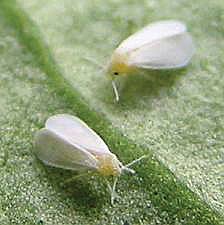- April 18, 2024
-
-
Loading

Loading

Have you noticed honeydew on your plants?
What about the black sooty mold that grows where there’s honeydew?
Then your plants might be experiencing the influx of whiteflies that has been spreading throughout Florida in the past few years.
On Longboat Key, whitefly impacts have been reported in the Longbeach Village and also at a Sleepy Lagoon home, according to Public Works Director Juan Florensa.
Former Mayor George Spoll also expressed concern about whitefly at the Feb. 4 Longboat Key Town Commission meeting.
“There is an invasion on Longboat Key scattered throughout the Key attacking and destroying banyan trees. I don’t know what we can do as a town, but anything we can do to push landscapers to treat trees would be helpful or we could lose very valuable cover on Longboat Key,” he said.
Whiteflies excrete honeydew, which doesn’t harm plants, but can cause a black mold to grow. The honeydew can be messy and potentially impact painted objects it comes in contact with if it isn’t washed off, according to the town’s website, longboatkey.org.
The type of whitefly reported locally has been the spiraling whitefly, which is most common on barrier islands or areas close to the water, according to Florensa.
According to the town’s website, longboatkey.org, the impact of whitefly infestation isn’t clear. Although whiteflies can cause plant decline, defoliation and branch dieback, they generally aren’t lethal to the host plant.
“It’s not lethal, but it does spread like fire ants, in which you treat your lawn, then the fire ants go into your neighbor’s lawn,” Florensa said.
The town doesn’t treat whitefly because of practical considerations — the cost and the fact that most impacted plants are on private property.
Residents should monitor plants for early signs of infestation, because whitefly is easier to manage before it reaches high populations.
For more information, visit the FAQ section on the town’s website, longboatkey.org.
What is A whitefly?
Whiteflies are small winged insects that are similar to aphids, scales and mealybugs. They typically feed on the underside of leaves with their needle-like mouthparts, which can cause host plants to wilt, yellow, stunt and leaf drop.
There are approximately 75 whitefly species.
Source: longboatkey.org/faqs